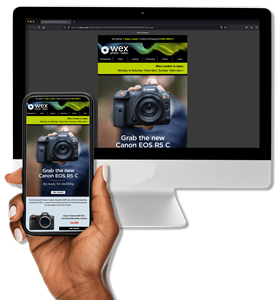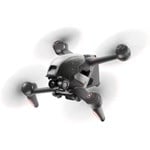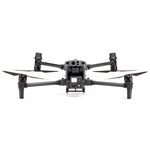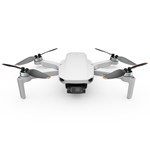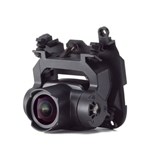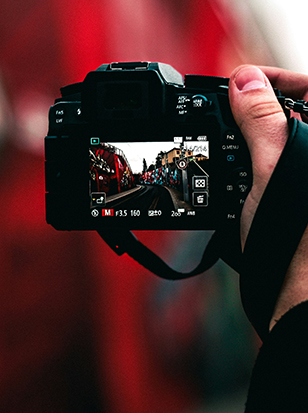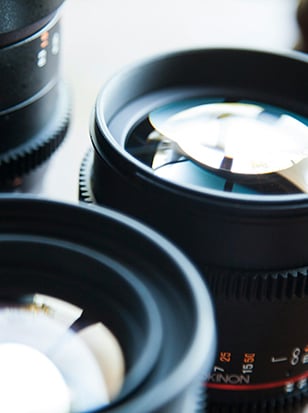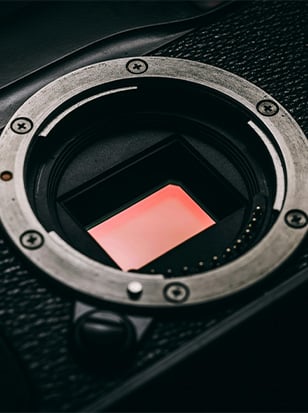
Drones offer a whole new way of capturing the world – offering angles, patterns and perspectives that were once only available to aerial photographers and filmmakers or professional drone pilots. But what was once a specialist field is now far more accessible, whether you're just starting out or shooting professionally. However, if you’re keen to get involved, there are some steps you need to take so that you fly safely and legally.
We're covering three key areas in this pre-flight checklist, guided by the official UK Civil Aviation Authority (CAA) and our trusted partners, Eagle Eye Innovations – a team of specialist drone pilots and trainers with professional credentials, qualifications, and experience in this field.
There are major Civil Aviation Authority (CAA) regulation changes coming - make sure you're aware.
Things to consider before you fly
Operator ID
|
All drones sold at Wex require an Operator ID, regardless of their weight. This ID must be clearly labelled on your drone and renewed annually. It is illegal to fly a drone without the necessary IDs. Breaking the rules can lead to fines or even imprisonment. The only exceptions are toy drones or model aircraft without cameras. |
Flyer ID
|
If your drone has a camera and weighs less than 250g, you don’t need a Flyer ID, but the CAA recommends getting one anyway. It’s free, simple to apply for, and valid for five years. A Flyer ID allows you to fly larger drones and operate drones owned by others. The application process also helps you better understand your responsibilities as a drone pilot. Most people tend to get the Flyer ID and Operator ID at the same time. |
Flight restrictions
|
You can’t simply fly your drone anywhere you like. There are places that you must never fly without specific permission or where drone flying is prohibited, such as airfields, prisons, and military areas. There also may be temporary restrictions put in place for events, etc. Do not rely on your drone’s software or updates to provide up-to-date information about restrictions or prohibited locations. For the latest information, visit the official NATS website or use third-party apps that use official data sources. |
Heights and distances
|
The Drone and Model Aircraft Code covers a wide range of flight details drone pilots must adhere to. |
Have you covered all the rules?
|
You are responsible for the safety of your flight and for avoiding collisions with people, objects and other aircraft. If you’re unsure, you can always refer to the CAA’s Introduction to Drone Flying and the UK rules. |
Are you safe to fly?
Do you know how to fly your drone?
Read the instructions and user manuals. Watch flight tutorials online. Download the latest software. Check critical components like battery level, motors and propellers before each flight. Be as diligent as you can be to ensure you know exactly how to fly your drone safely and efficiently.
Have you checked the weather?
You must check the weather before you fly. Most drones aren’t designed to fly in rain, and all will be affected by wind. Flying in conditions that exceed your drone’s manufacturer-stated limits can lead to poor performance, instability, or even prevent the drone from returning safely.
Can you see your drone at all times?
You must always keep your drone within your direct line of sight. Never rely solely on a screen or FPV (first-person view) goggles when flying; if you're using these, another person must be present to maintain visual contact with the drone at all times.
Do you understand your responsibility to safety?
Safety when flying is your top priority. Drones can cause serious damage or inquiry regardless of their size. You are responsible for keeping other people, the aircraft and property safe. Don’t take risks - it’s not worth it!
Do you need any extra permissions or qualifications?
You may need extra permissions or qualifications depending on the type of drone, type of flight, and whether you’re close to people or specific locations. For example, this could be a CAA A2 Qualification or new Recognised Assessment Entity (RAE) Pilot Competence (PC) Levels – RAE(PC).
Have you weighed your drone?
Some smaller drones are sold as weighing 250g or less, which would mean you don’t need a Flyer ID. However, some of these drones may weigh over 250g once accessories such as propeller guards or ND filters are attached. It is the pilot’s responsibility to check the take-off weight before flying.
In the UK, drones weighing 250g or more require the pilot to hold a Flyer ID, which involves passing a free online test provided by the Civil Aviation Authority (CAA). Regardless of weight, all drones with a camera must be registered to obtain an Operator ID.
By law, you must:
- Register as an operator (for drones with a camera, including those under 250g)
- Hold a Flyer ID if the drone weighs 250g or more
- Follow the CAA’s Drone and Model Aircraft Code
For more information or to register, visit https://register-drones.caa.co.uk.
Are you flying for work?
Are you flying for your job? Well, there’s no distinction between flying commercially or recreationally, meaning you don’t need additional approval for commercial piloting. However, all commercial drone flights require specific and valid business insurance for every flight. You can purchase this on a pay-as-you-fly basis or as an annual policy.
If you are flying as part of a business or as a freelancer, we recommend carefully reading the CAA’s CAP 722: Unmanned Aircraft System Operations in UK Airspace - Guidance.
Wrapping things up
This is just a quick pre-flight checklist for most casual pilots, but for the full breakdown of all rules, regulations, restrictions, and more, you’re best to go to the CAA website.
We also work with Eagle Eye Innovations, our preferred qualification board. They are accredited as a Recognised Assessment Entity (RAE) by the CAA, allowing them to deliver training for the A2 Certificate of Competency (A2 CofC) and the General Visual Line of Sight Certificate (GVC).
And if you are yet to choose a drone, you can take a look at our guide to the best drones or take a look at all the drones we offer here.
Sign up for our newsletter today!
- Subscribe for exclusive discounts and special offers
- Receive our monthly content roundups
- Get the latest news and know-how from our experts
